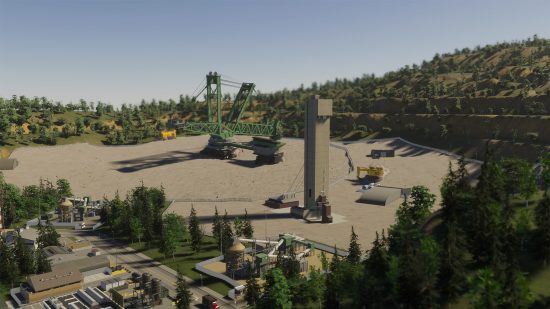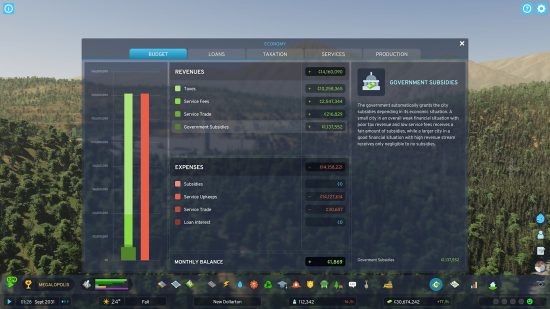What is Cities Skylines 2 industry? Your city, whether it’s a burgeoning hamlet or a mass of uneven skyscrapers, needs a way to self-sustain. The symbiotic relationship between residential, commercial, and industry is the thing that keeps your citizens happy and healthy, and, most importantly, what keeps the money coming in.
Our Cities Skylines 2 review goes into detail about the changes made from the previous entry in the series, with one of those things being how industry works. Industry is quite a nebulous subject; it is a sector of your city that produces things. These things vary, and realistically, it doesn’t matter what they are – what does matter is that they can make you Cities Skylines 2 money, reduce costs, and help maintain happiness in your people.

How Cities Skylines 2 industry works
Your industry buildings are a key piece in the economic cycle – they produce the goods that are sold in the commercial buildings. People need to buy products to survive, commercial buildings sell the products people need, industry produces the products sold in commercial buildings, and in turn, needs people to work in the factories. A delicate process that can be difficult to manage, but ultimately, one that every successful city needs.
Here are some tips to maximize your Cities Skylines 2 industry:
Profit, profit, profit
The type of product produced by your industry areas is decided on what will bring them the most profit. There are several factors that can affect a company’s profit margin, including the value of the land they work on and the taxes they pay.
If you are struggling to fill your industry zones, try placing them in a lower-value area of your city, and if need be, lower the taxes that industry pays – even just temporarily. On the flip side, if you find that you’re producing too much, you can increase taxes, which will lower the industry excess and also bring in some extra tax money as a by-product.

Skill issue
Your industry buildings cater their output depending on the workforce they have available – some production, especially mass production, relies on a relatively uneducated workforce, while specialized products lean on highly-educated individuals to ply their trade.
Profit margins are slimmer with a highly educated workforce, but ultimately the products they produce are of a higher quality and will result in more happiness – just as long as your citizens can afford to buy them.
It’s all natural
Your industry sectors rely on a constant stream of natural resources in order to function, so ensure that you have what you need in order to keep production going. Utilize the natural resource view in the top left corner of the screen to see what you have an abundance of.
Your factories will adjust what they produce based on what’s available, but without anything to hand, they’ll have to import these resources at a cost.
Now you know how to maximize your Cities Skylines 2 industry, you’re well on your way to becoming a truly self-sustaining metropolis. Make sure you’re connecting all of your key zones using Cities Skylines 2 roads, and even Cities Skylines 2 highways if you find that the Cities Skylines 2 traffic is getting a bit much.

